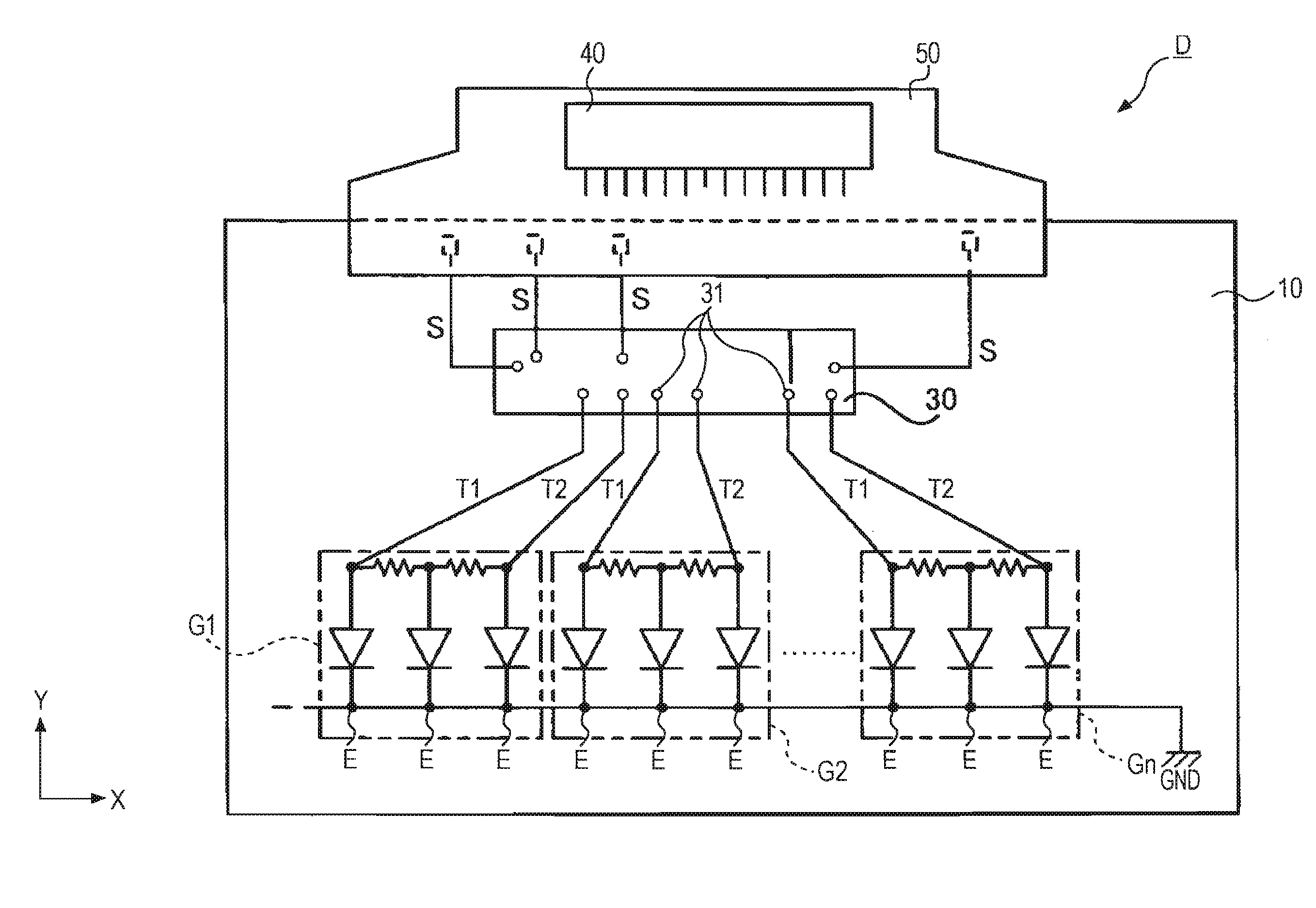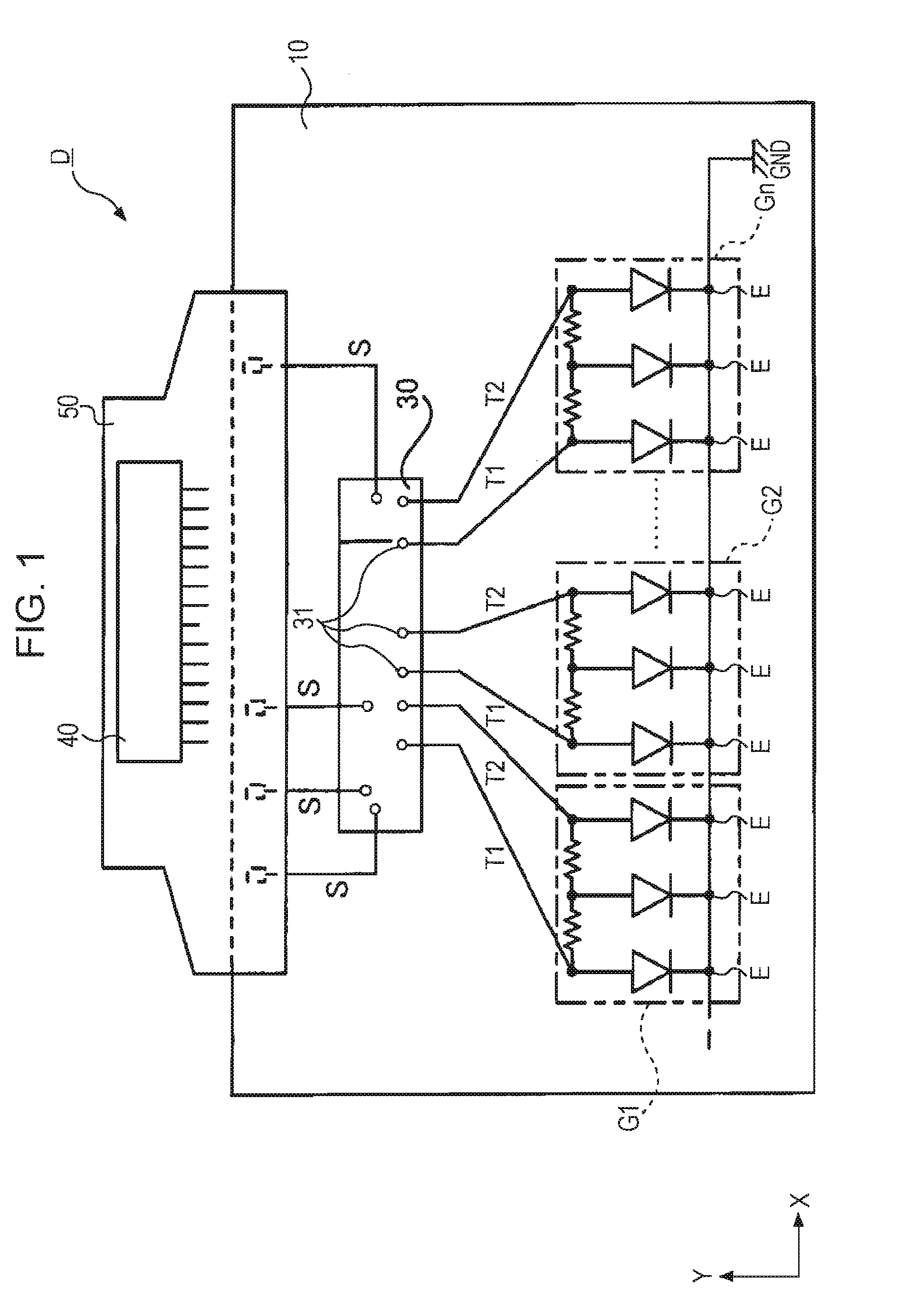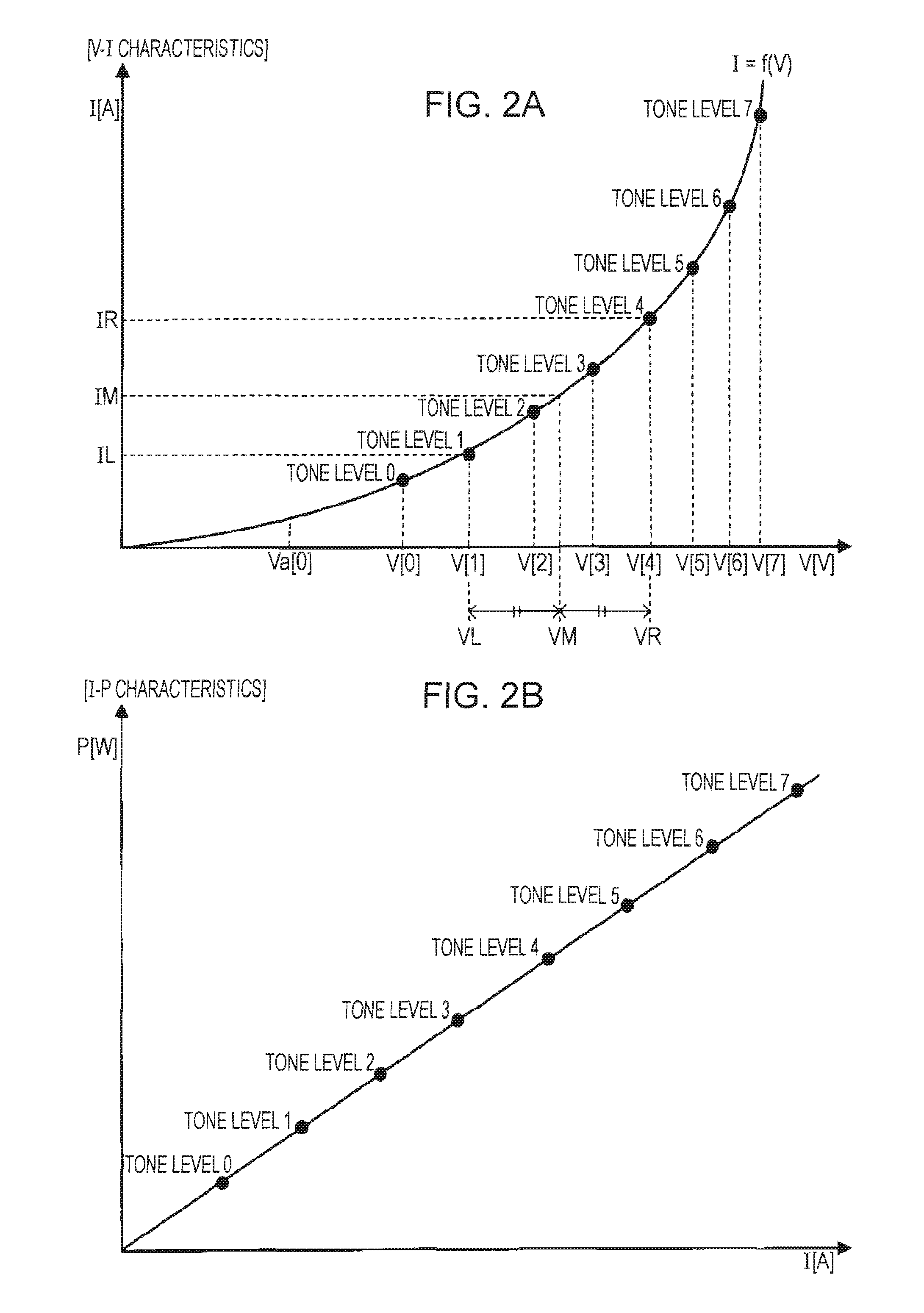Electro-optical device and image forming apparatus
a technology of optical devices and image forming apparatus, which is applied in the direction of static indicating devices, multiplex communication, instruments, etc., can solve the problems of reducing affecting so as to improve the resolution of electro-optical elements and reduce the dimensions of drive circuits.
- Summary
- Abstract
- Description
- Claims
- Application Information
AI Technical Summary
Benefits of technology
Problems solved by technology
Method used
Image
Examples
first embodiment
A. First Embodiment
[0032]FIG. 1 is a plan view of an exemplary structure of an electro-optical device D according to a first embodiment of the invention. The electro-optical device D is used, for example, as an exposure device for forming a latent image on a photosensitive member in an electrophotographic image forming apparatus. As shown in FIG. 1, the electro-optical device D has a substrate 10 and a plurality of electro-optical elements E formed on a surface of the substrate 10. The electro-optical elements E are arranged in two lines along the X-direction (main scanning direction) in a zigzag pattern. The electro-optical elements E according to the first embodiment are organic light-emitting diodes, each having a light-emitting layer made of an organic electroluminescent (EL) material and an anode and a cathode sandwiching the light-emitting layer. Each of the electro-optical elements E emits light with brightness according to current supplied to the light-emitting layer. The el...
second embodiment
B. Second Embodiment
[0054]In the first embodiment, in the case that different tone levels are specified to the electro-optical elements El and ER, the electro-optical element EM provides a tone level between those of the electro-optical elements EL and ER. Since the tone level in a natural image such as a photograph tends to change step by step, the above-described tone-level control scheme (e.g., the on / off states shown in FIG. 5C) is preferable. However, in the case of an image mainly including lines such as sentences and diagrams (hereinafter referred to as a “data image”), it is preferable that the shades of tones be clearly distinguished (e.g., the on / off states shown in FIG. 5D) in contrast to a natural image such as a photograph where the tone level tends to change continuously. According to a second embodiment, in the case that an image to be output (hereinafter referred to as an “output image”) is a data image, the voltage value of each drive voltage is set such that the bo...
third embodiment
C. Third Embodiment
[0058]In the first and second embodiments, the anodes of the electro-optical elements EL, EM, and ER are separated from one another. Alternatively, an anode may be continuous across a point at which the drive voltage VL is applied and a point at which the drive voltage VR is applied.
[0059]Portions (a) to (c) of FIG. 8 illustrate a drive method according to a third embodiment of the invention. Sections corresponding to those in the first embodiment are referred to using the same reference numerals, and descriptions thereof are omitted where appropriate.
[0060]As shown in portion (a) of FIG. 8, the electro-optical device D has an electro-optical layer (light-emitting layer) 200 made of an electro-optical material, such as an organic EL material, a cathode 300 continuous over the entire electro-optical layer 200, and a plurality of anodes 100 facing the cathode 300 with the electro-optical layer 200 provided therebetween. The anodes 100 are separated from one another....
PUM
 Login to View More
Login to View More Abstract
Description
Claims
Application Information
 Login to View More
Login to View More - R&D
- Intellectual Property
- Life Sciences
- Materials
- Tech Scout
- Unparalleled Data Quality
- Higher Quality Content
- 60% Fewer Hallucinations
Browse by: Latest US Patents, China's latest patents, Technical Efficacy Thesaurus, Application Domain, Technology Topic, Popular Technical Reports.
© 2025 PatSnap. All rights reserved.Legal|Privacy policy|Modern Slavery Act Transparency Statement|Sitemap|About US| Contact US: help@patsnap.com



